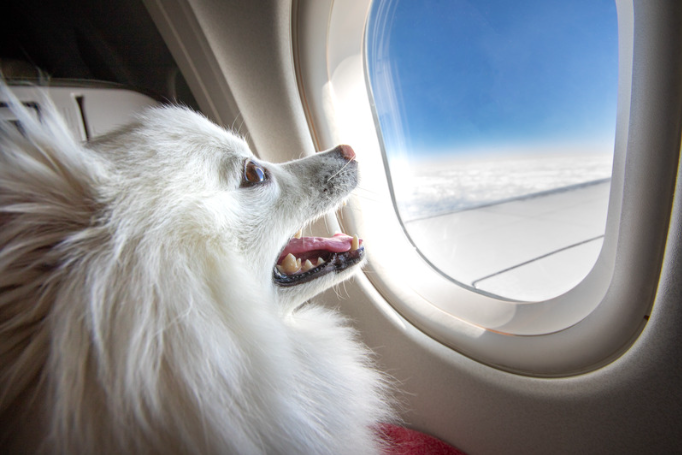Last Updated on September 17, 2023 by Fumipets
Why Flying with Pets Needs a Rethink: Grounding Fido and Fluffy
The Disturbing Reality of Pets on Planes
In a candid revelation, it’s time to confront an uncomfortable truth: our beloved pets shouldn’t be soaring in the skies. Let’s pause, take a moment to reflect, and consider why grounding Fido and Fluffy is the humane choice, for their sake and ours.
A Troubling Trend in the Skies
Summer 2023 has seen a concerning surge in incidents involving animals on aircraft. One heart-wrenching case involved a Delta Air Lines passenger who lost her dog while flying from Santo Domingo to San Francisco. As we speak, the airline is still engaged in a frantic search for the missing pup, who managed to escape from its kennel mid-flight.
Responsible Choices for Pet and Owner
Leaving your four-legged friend in the comfort of home while you embark on your vacation is a decision that truly makes sense. Most pets, quite simply, don’t cope well with air travel. Furthermore, many passengers remain blissfully unaware of the complexities of flying with their animal companions.
I understand that my stance may ruffle the feathers (or fur) of the 66% of our readers who own pets. However, I implore you to hear me out.
A Year Marked by Pet-Flying Trials
The past year has witnessed an alarming escalation of incidents involving flying pets. Viral stories abound, recounting entitled pet owners being removed from flights or leaving their furry friends stranded at airports, underscoring a situation that’s spiraling out of control.
Airplanes, it turns out, can be harrowing ordeals for our canine and feline companions. The prolonged confinement within a kennel, coupled with the distressing engine noise and fluctuating air pressure, takes a severe toll on our beloved pets.
Tragically, the Department of Transportation’s reports revealed that domestic airlines transported 188,223 animals last year, seven of which met untimely and entirely preventable deaths during transit.
It’s not only our furry friends who suffer; passengers, too, endure the consequences. Picture yourself on a flight with allergies, or attempting to catch some rest while a neighboring seat houses a barking dog—no one would classify that as an enjoyable experience.
A Tale of Howling Discomfort
Consider Dave Dzurick’s ordeal. During a recent flight from Boston to Phoenix, he and his wife were subjected to the incessant howling of a distressed cat confined beneath a passenger’s seat.
“Many passengers voiced their complaints to the flight attendants,” recounted Dzurick, a retired broadcast engineer from Tucson, Arizona. “But there was little they could do.”
Dzurick was right to assert that the cat should have remained on terra firma. Cats, prone to hissing and anxiety, don’t belong on commercial flights. In a desperate move, Dzurick’s wife even resorted to removing her hearing aid for some respite.
If squishing a cat into a cramped plastic crate so you can vacation with it isn’t animal cruelty, it’s challenging to say what is.
Traveling Can Be a Nightmare for Your Pet
Experts corroborate Dzurick’s unfortunate experience. According to Sabrina Kong, a veterinarian and contributor to WeLoveDoodles, traveling with pets often appears more like a human’s dream and a pet’s nightmare.
Dogs and cats thrive on routines, and travel disrupts their stability. Many pets, due to their size, age, or temperament, aren’t suitable for air travel. Furthermore, the stress is compounded by the fact that numerous destinations don’t extend a warm welcome to our animal companions, limiting our choices of where we can take them.
Kong’s viewpoint aligns with other experts who advocate for pets staying at home. Blythe Neer, a professional dog trainer, asserts that many dogs are terrified of flying in cargo holds and require sedation. Even some small dogs, who fit under seats, emerge traumatized from the experience.
Neer advises, “If your dog experiences anxiety in a car or in unfamiliar or crowded environments, it’s best to leave them in the comfort of home. No vacation is enjoyable when you or your pet are experiencing panic.”
The Predicament of Pet Owners
The issue at hand isn’t solely about pets; it’s about pet owners too. Responsible pet travel necessitates diligent preparation. This includes ensuring that your pet has the correct carrier, vaccinations, identification, and microchip. Additionally, it involves researching destinations to confirm pet-friendly accommodations, suitable transportation, and animal-friendly dining and attractions.
Unfortunately, many pet owners falter in their preparations. Even if their pets survive the flight unscathed, some pet parents choose to leave their animals alone in hotel rooms while they enjoy beach outings or dinners. This abandonment only exacerbates their pet’s anxiety and sets the stage for an agonizing return flight.
Bradley Phifer, executive director of the Certification Council for Professional Dog Trainers, offers this advice, “If you’re seeking an escape from daily responsibilities, it’s best that your dog remains at home.”
Furthermore, confining a dog to a hotel room can lead to consequences beyond pet anxiety—it can also result in trouble with the hotel, which typically has stringent rules regarding leaving pets unattended, or even legal repercussions, as evidenced by a Pennsylvania man who faced charges for allegedly leaving a puppy alone in a hotel room.
Exception for Some Animals
It’s crucial to clarify that no one advocates for a blanket ban on traveling with animals. Service dogs, indispensable for passengers with disabilities, are trained to endure the rigors of air travel. Recent Department of Transportation regulations have addressed the issue of fake therapy animals.
Additionally, exceptions may be warranted for pet owners relocating overseas or for those fortunate enough to have exceptionally well-behaved dogs or cats who can accompany them on vacation. However, such scenarios typically involve less anxiety-inducing road trips with frequent pit stops.
Take, for instance, Pepper, the canine companion of Cheri Honnas, a veterinarian and advisor to Bone Voyage Dog Rescue. Honnas conducts extensive research on her destination, ensuring a pet-friendly itinerary with adequate rest stops. She packs a specialized bag for Pepper, complete with food, water bowls, medications, flea and tick preventives, a litter bag, leash, collar, bedding, and grooming essentials.
The question then becomes: “Is it a ‘yes’ to Fido and Fluffy joining the family vacation?” Honnas wisely posits that this decision hinges on your pet’s unique needs and personality.
In sum, it’s a “yes” to conscientious preparation and effort, but regrettably, few are willing to undertake such diligence before their vacation.
Concluding Thoughts: A Call for Consideration
In conclusion, the consensus is building—our pets are better off grounded. While it may be tempting to have your furry companion by your side for every adventure, the skies are not where they belong. Pets are not people, and they don’t yearn to take flight. It’s a choice we should make on their behalf, and for our own comfort too.
In this era of responsible travel, let’s ensure that our pets experience the care, comfort, and security they deserve. Grounded or not, they are an essential part of our lives, and their well-being should always be paramount.


















